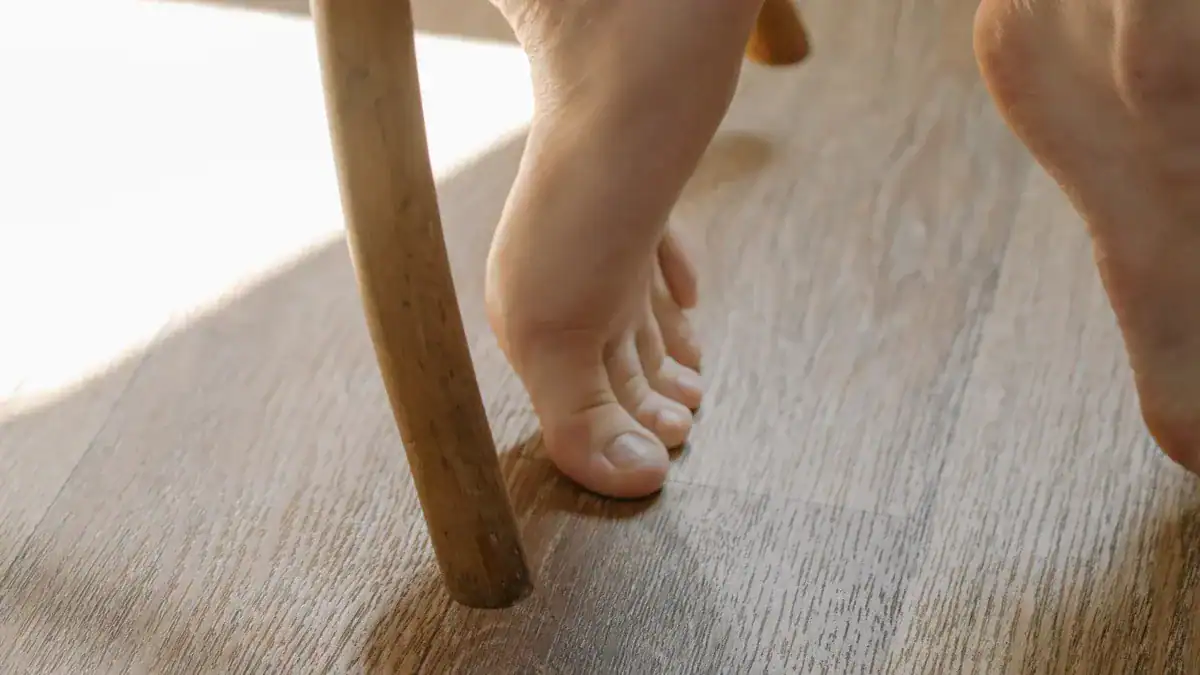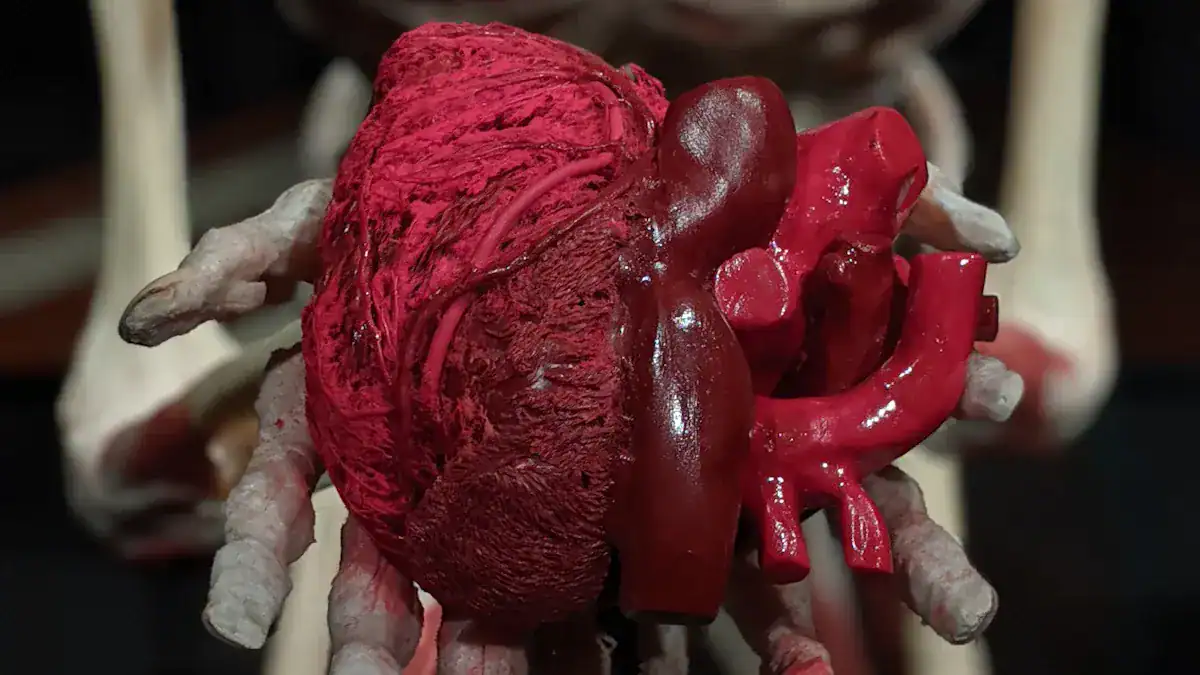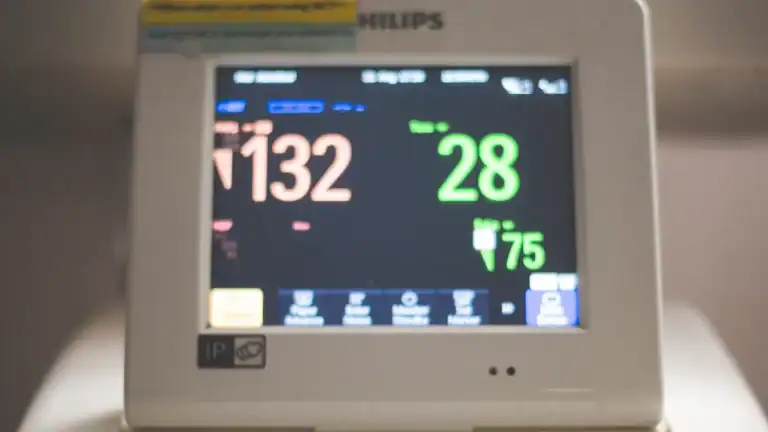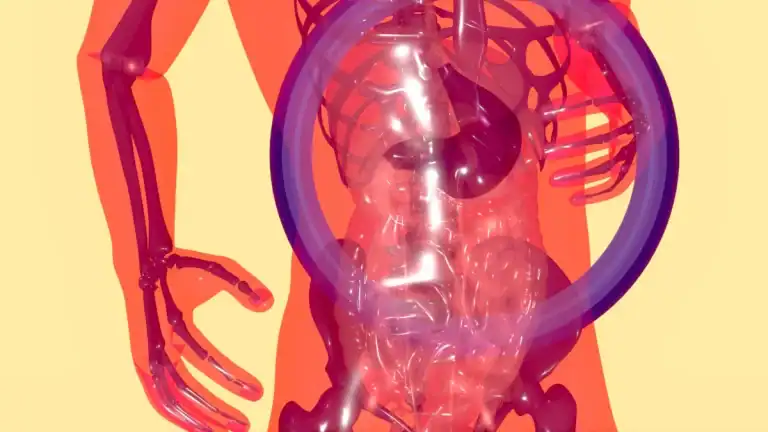
You might feel cold legs sometimes. This can be a normal reaction to a chilly environment. However, persistent cold legs can also signal underlying health issues. Problems with your circulation, like Peripheral Artery Disease, or nerve conditions, such as neuropathy, often cause this sensation.
This article explores various causes, helps you understand potential risks, and tells you when medical attention is crucial. Do not try to diagnose yourself. Always seek professional advice for any lasting or worrying symptoms, especially if you also have cold feet.
Key Takeaways
Cold legs can be normal in a chilly room. Your body keeps vital organs warm. It reduces blood flow to your legs.
Persistent cold legs can signal health problems. Look for pain, numbness, or skin changes. One leg colder than the other is a warning sign.
Poor blood flow is a common cause. Conditions like PAD or nerve damage can make legs cold. Diabetes also damages blood vessels.
Ignoring cold legs can be dangerous. It can lead to heart attack, stroke, or tissue damage. It can also worsen other health issues.
See a doctor if coldness lasts a long time. Get help if you have pain, numbness, or sores. Early diagnosis helps prevent serious problems.
Understanding Cold Legs

Normal Cold Sensation
You might often experience a sensation of coldness in your legs. This is a very common and usually harmless feeling. Think about stepping into a cold room or spending time outdoors on a chilly day. Your body has a natural response to cold temperatures. It prioritizes keeping your vital organs warm. To achieve this, your body constricts the blood vessels in your limbs. This action reduces the flow of warm blood to your legs and cold feet.
Sitting still for extended periods can also contribute to this cool feeling. Movement helps to circulate blood more effectively. This type of coldness is typically temporary. It quickly disappears once you warm up or begin moving around. It is simply your body’s way of adapting to its environment. You do not need to worry about this normal reaction.
When Cold Legs Signal Trouble
However, cold legs can sometimes be a clear indicator of an underlying health issue. If your legs feel cold constantly, or if there is no obvious reason for the coldness, you should pay close attention. This is especially important if the cold sensation comes with other concerning symptoms.
These warning symptoms might include persistent pain, numbness, or a tingling feeling in your legs or cold feet. You might also observe noticeable changes in your skin’s appearance. Your skin could look unusually pale, bluish, or blotchy. It might also feel thin or appear shiny. A significant red flag is when one leg feels distinctly colder than the other. This asymmetry is often a sign of trouble. These signs suggest that your legs are not receiving adequate blood flow. This means they are deprived of essential oxygen and nutrients.
Problems with your nerves can also lead to these specific kinds of symptoms. These are not just typical reactions to cold. They are important signals from your body. Do not ignore these persistent or unusual feelings. They indicate that something more serious might be happening within your body, requiring further investigation.
Causes of Cold Legs
Many factors can make your legs feel cold. Poor blood flow is the most common reason, especially for your cold feet. Understanding these causes helps you know when to seek help.
Circulatory Problems
Your body needs good blood flow to keep your legs warm. Several circulatory issues can disrupt this process. These problems include heart disease, blockages in narrow arteries, or constricted blood vessels. Peripheral artery disease (PAD) and Raynaud’s phenomenon are also common causes.
Peripheral artery disease (PAD) narrows your blood vessels and arteries. Atherosclerosis makes your arteries stiff. This happens because plaque builds up inside them. Both conditions reduce blood flow to your limbs. This results in cold legs. Raynaud’s disease causes arteries in your hands and feet to spasm and narrow. This restricts blood flow.
Buerger’s disease links to tobacco use. It makes blood vessels in your hands and feet swell. This slows blood flow and can form clots. High cholesterol also leads to circulation problems. Cholesterol and inflammation build up in your blood vessels.
Peripheral Artery Disease (PAD)
Peripheral artery disease (PAD) is a condition where narrowed arteries reduce blood flow to your limbs, most often your legs. This can make your legs feel cold. About 4.6% of adults aged 40 or older in the U.S. have PAD. This number changes with age, gender, and race. Older people, non-Hispanic Black individuals, and women often have higher rates.
Several things increase your risk for PAD. These include high blood pressure, diabetes, chronic kidney disease, smoking, and high cholesterol. Your risk of PAD goes up significantly if you have many of these risk factors. For example, having three or more risk factors increases your odds by more than ten times.
Raynaud’s Phenomenon
Raynaud’s Phenomenon (RP) makes your fingers and toes feel cold and numb. This happens when small arteries in your hands and feet temporarily narrow. You might notice a specific color pattern in your digits.
First, they turn white (pallor) because blood flow is restricted. Then, they become blue (cyanosis) as tissues lack oxygen. Finally, they turn red (rubor) when blood flow returns. You might also feel numbness and swelling.
Many things can trigger Raynaud’s symptoms. Exposure to cold is the most common trigger. Even small temperature changes, like walking into an air-conditioned building, can cause an attack. Other triggers include emotional stress, certain medications like beta-blockers, injuries from vibrations, or prolonged use of your fingers. Smoking and vaping can also trigger attacks.
Deep Vein Thrombosis (DVT)
Deep Vein Thrombosis (DVT) happens when a blood clot forms in a deep vein, usually in your leg. This clot can block blood flow and make your leg feel cold. You might experience calf pain when you flex your foot.
This pain often feels deep inside your leg and worsens with activity or standing. Your leg might swell, usually in one leg, and feel painful to touch. The affected leg can also look red or feel warm.
DVT carries immediate dangers. The most serious is a pulmonary embolism (PE). This happens if a piece of the blood clot breaks off and travels to your lungs. It blocks blood flow there. PE is life-threatening and needs emergency care. Watch for sudden shortness of breath, sharp chest pain, a fast pulse, or dizziness. DVT can also lead to chronic venous insufficiency or post-thrombotic syndrome, causing long-term pain and swelling.
Chronic Venous Insufficiency
Chronic Venous Insufficiency (CVI) occurs when the veins in your legs have trouble sending blood back to your heart. This causes blood to pool in your leg veins. The pressure inside these veins increases.
This condition impedes the return of blood from your legs to your heart. If you do not treat it, the high pressure can rupture tiny blood vessels. This leads to tissue inflammation and damage. Your skin might turn reddish-brown and become fragile. These burst capillaries can also cause venous stasis ulcers. These are open sores that heal slowly and can get infected.
CVI can cause several long-term effects. You might have achy or tired legs, burning, tingling, or “pins and needles” sensations. Nighttime leg cramps are also common. Your lower legs and ankles might swell, especially after standing. Your skin can become flaky, itchy, or leathery. Severe swelling can lead to scar tissue, making your calf feel large and hard.
Condition | Likelihood of Varicose Veins |
|---|---|
Moderate cold hypersensitivity | 1.5 times more likely |
Severe cold sensitivity | Nearly double the risk |
Heavy legs alone | Over fourfold increase |
Heavy legs + severe cold hypersensitivity | Over seven times more likely |
Nerve Issues
Problems with your nerve system can also cause cold sensations in your legs. Your nerves send signals between your brain and your body. Damage to these nerves can lead to unusual feelings, including coldness. Peripheral neuropathy is a common nerve condition that causes this.
Peripheral Neuropathy
Peripheral neuropathy (PN) happens when your peripheral nerves get damaged. These nerves carry signals from your central nervous system to the rest of your body. This damage can cause strange sensations, including coldness in your legs. You might not feel temperature changes properly. For example, you might not feel the coldness of a floor through your feet.
Many things can cause PN. Unmanaged high blood sugar from type 2 diabetes is a common cause. Excessive alcohol intake can damage nerves. Deficiencies in vitamins like B1, B6, B9, B12, folic acid, and E can also cause nerve damage. Autoimmune diseases, certain medications, toxins, and physical injuries can also lead to PN.
Sciatica
Sciatica occurs when your sciatic nerve, which runs from your lower back down your leg, gets compressed or irritated. This can cause pain, numbness, tingling, and even intense hot or cold sensations in your leg. Studies show that a colder temperature in the lower part of your affected leg often links to spinal nerve root compression. This coldness is most noticeable if you have a herniated disc. The nerve compression disrupts signals that help regulate blood flow to your skin. This makes your leg feel cold.
Systemic Conditions
Some conditions that affect your whole body can also cause cold legs. For example, a strong link exists between being very sensitive to cold, especially having ice-cold feet, and varicose veins. Varicose veins happen when the veins in your legs do not work correctly. Raynaud’s disease, which causes small arteries to narrow, also leads to coldness. Peripheral vascular disease, like PAD, also reduces blood flow to your legs, making them cold.
Hypothyroidism
Hypothyroidism means your thyroid gland does not make enough thyroid hormones. These hormones help regulate your body temperature. Low thyroid function can lead to a low body temperature. This promotes fluid retention. Reduced circulation due to low thyroid function can cause fluid to build up in your extremities. This can make your legs feel cold.
Anemia
Anemia means your blood lacks enough healthy red blood cells. Red blood cells carry oxygen to your body’s tissues. When your body lacks oxygen due to anemia, you can experience cold hands or cold feet.
Several types of anemia exist. Iron-deficiency anemia is the most common. It happens when you do not have enough iron. Vitamin-deficiency anemia occurs from low levels of vitamin B12 or folate. Sickle cell anemia is an inherited condition with abnormal hemoglobin. Other types include hemolytic anemia, where red blood cells are destroyed too quickly.
Diabetes
Diabetes significantly contributes to cold legs. High blood sugar levels over time damage blood vessels in your legs and feet.
This leads to circulation issues. Diabetes can also make your blood thicker, further slowing blood flow. You have a higher risk of developing peripheral vascular disease (PAD) with diabetes. PAD narrows blood vessels and reduces blood flow to your limbs. Diabetes can also cause peripheral neuropathy. This nerve damage can make your body misinterpret temperature signals, causing a sensation of coldness.
Diabetes can lead to other foot complications. Your skin might become dry and crack. Calluses can form faster. Poor circulation makes it harder for your feet to fight infection and heal. Foot ulcers, which are open sores, can appear. In severe cases, these complications can lead to amputation.
Frostbite
Frostbite is an injury caused by freezing of the skin and underlying tissues. It happens when you expose your skin to very cold temperatures. Your legs can become cold and damaged.
Frostbite has several stages:
Frostnip: This is the first stage. Your skin may look red or purple and feel cold, slightly painful, and tingly. This is a warning stage. Thawing the area quickly can prevent lasting damage.
Superficial (surface) frostbite: This second stage needs medical treatment. Your skin might feel warm, but ice crystals are forming in your skin. You might feel “pins and needles,” stinging, or swelling. After warming, painful, spotty patches or purple/blue areas can appear. Blisters may form later.
Severe (deep) frostbite: This is the third stage. Lower layers of your skin freeze. You will feel total numbness. Moving the affected area becomes difficult. Large blisters appear a day or two after cold exposure. This stage requires immediate medical attention.
Fourth-degree frostbite: This is the most severe stage. It affects muscles, tendons, and bone. Your skin becomes colorless and hard. Later, it turns black and mummified. This can cause permanent damage and may require amputation.
Dangers of Cold Legs

Ignoring persistent cold legs can lead to serious health problems. These issues often progress silently. You must understand the risks.
Circulatory Complications
Persistent cold feet and numb toes can signal severe vascular problems. Conditions like Peripheral Artery Disease (PAD), Chronic Venous Insufficiency (CVI), Raynaud’s Disease, and Diabetic Neuropathy and Vascular Disease are often the underlying causes. These conditions create circulatory issues. Slow-healing wounds on your feet are a critical sign. They show advanced circulatory problems and need medical attention. Deep Vein Thrombosis (DVT) is another severe circulatory complication. It involves blood clots forming in deep veins, usually in your leg. A blood clot can travel to your lungs. This causes a pulmonary embolism, a life-threatening event.
Heart Attack and Stroke Risk
Poor circulation in your legs often means you have widespread vascular disease. This disease affects your entire body. It increases your risk for a heart attack or stroke. Your arteries may have plaque buildup. This can affect your heart and brain. A serious heart condition can develop from these issues.
Amputation and Tissue Damage
Limited blood flow to your lower extremities can severely damage foot and leg tissue. This often happens with Peripheral Artery Disease (PAD). Untreated, non-healing ulcers from PAD can become infected. In extreme cases, this leads to foot or leg amputation. Achieving healthy circulatory flow in your extremities is crucial. It helps you avoid limb loss. Severe frostbite can also lead to amputation. Damaged blood vessels from frostbite can cause gangrene. This may require amputation of the affected limb.
Nerve Damage Effects
Prolonged nerve damage can have irreversible effects on your leg function. You might feel tingling or burning in your legs, often starting in your toes and cold feet. You may experience deep pain. You can lose feeling in your legs. This means you might not notice injuries, like stepping on sharp objects. Numbness can cause you to lose balance.
You might have difficulty sensing where your feet are. Nerve damage makes muscle control harder. It causes weakness. You might have problems with movement, like your legs buckling. You could trip over your toes. Muscle twitching, cramping, and muscle shrinkage are also possible.
Worsening Chronic Illnesses
Cold legs can indicate that your chronic illnesses are not well-managed. Conditions like diabetes or hypothyroidism can worsen if you ignore the symptoms in your legs. Addressing the cause of your cold legs helps you manage your overall health better.
When to See a Doctor
You might sometimes feel cold in your legs. This can be normal. However, certain symptoms mean you need to see a doctor. Knowing these “red flag” symptoms helps you get help when it matters most. This section tells you when to see a doctor for your cold legs.
Persistent Coldness
You should not ignore coldness that lasts a long time. If your cold legs feel cold constantly, or if the feeling does not go away, you need to act. You should consult a doctor if the feeling of coldness in your legs persists.
This is especially true if you also have pain, numbness, or discoloration in your cold feet. Seek immediate medical attention for sudden, intense pain in one leg. Also, look for a change in skin color or a wound on your cold feet that will not heal. Go to the emergency room if a leg is suddenly cold, painful, and swollen. This could mean you have a blood clot, also known as thrombosis. Lingering discomfort or persistent cold feet, even after trying home remedies, means you need a medical visit.
One-Sided Coldness
One leg feeling much colder than the other is a serious sign. This difference often points to a problem with blood flow or nerves. Several conditions can cause coldness in only one leg:
Peripheral Artery Disease (PAD): This is a common cause. Coldness in one leg is a key symptom. You might also have leg pain, cramping, skin color changes, weakness,
numbness, slow-healing sores, and hair loss on that leg.Nerve Damage (Peripheral Neuropathy): This can cause coldness,
numbness, and tingling in your legs. People with diabetes often experience this.Blood Clots (Deep Vein Thrombosis): A clot in one leg can block blood flow. This leads to coldness, pain, and swelling. You need immediate medical attention for this.
Raynaud’s Disease: This condition mainly affects blood flow in your fingers and toes. However, it can also cause coldness and discoloration in one or both legs. This happens because blood vessels spasm.
Skin Changes and Sores
Look closely at your skin. Changes in your skin can be important symptoms. Unexplained and sudden redness, pain, swelling, or warmth in your leg, especially below the knee, can be serious. This is particularly true if you also have trouble breathing or chest pains. These symptoms may mean you have a blood clot or deep vein thrombosis (DVT). Any new, unexplained swelling in your leg needs serious attention. It could be a medical emergency like a blood clot or DVT.
Other skin changes also need a doctor‘s visit:
Blistering and open sores, especially with swelling and flu-like
symptoms, could suggest toxic epidermal necrolysis. This is a severe drug reaction. It needs immediate attention.Purple rashes that look like bruises can signal blood clots, a spreading infection, or vasculitis. These also need medical consultation.
Pain, Numbness, or Tingling
Pain, numbness, or tingling in your legs can be normal sometimes. However, certain characteristics mean you have a serious underlying condition. You should see a doctor if you have:
Frequent or intense sensations of
numbnessor tingling.Persistent or recurring
numbnessor tingling in your legs andcold feet.Numbnessor tingling not linked to posture or lifestyle, like tight clothing.Sensations that last for extended periods.
Symptomsaccompanied by other ongoingsymptoms.Symptomsaccompanied by permanent or long-term changes in the color, shape, or temperature of your legs andcold feet.Unexplained, persistent, or painful
numbness.
Weakness or Heaviness
You should also pay attention if your legs feel weak or heavy. This can be a sign of poor circulation or nerve damage. You might feel a cramping or heaviness in your calves. This feeling can get worse when you walk. It might ease when you rest. This could be a sign of Peripheral Artery Disease (PAD). If you notice your legs feel unusually tired or heavy, especially after light activity, talk to your doctor.
Unusual Symptoms
Sometimes, symptoms of cold feet are not just coldness. If your persistent cold feet come with other unusual symptoms, you need to seek medical help. For example, if you have cold feet all the time, especially if only one foot is cold, it could mean you have Peripheral Vascular Disease (PVD). PVD can cause pain in your foot, calf, or thigh when you walk.
It can also cause weakness or fatigue in the affected leg, or leg cramps at night. If your cold feet also have a burning sensation or a feeling like you are walking on a cloud, it might be peripheral neuropathy. This condition can also cause weakness, pain, and numbness. These symptoms of cold feet are important signals from your body.
Doctor’s Visit and Diagnosis
When you experience persistent cold legs, seeing a doctor is an important step. A doctor helps you understand the cause of your symptoms. They guide you toward the right care.
Medical Evaluation
Your doctor will start with a thorough medical evaluation. You will discuss your symptoms in detail. Tell your doctor when your legs feel cold. Describe any other feelings like pain, numbness, or tingling. Your doctor will ask about your medical history. They will want to know about any existing health conditions you have. They will also ask about medications you take.
A physical exam will check your legs and feet. The doctor will look for skin changes, swelling, or differences in temperature between your legs. This initial assessment helps your doctor form a preliminary diagnosis.
Diagnostic Tests
Your doctor may order several diagnostic tests. These tests help pinpoint the exact cause of your cold legs. You might have blood tests to check for conditions like anemia or hypothyroidism. Other specialized tests can assess blood flow and nerve function. For example, a cold stimulation test can show how your blood vessels react to cold.
Digital infrared thermography imaging (DITI) and cold stress tests (CST) measure skin temperature changes. Heart rate variability (HRV) tests assess nerve control over your heart. Red blood cell deformability tests check how flexible your blood cells are. Peripheral nerve tests look for nerve damage. The Doctronic AI symptom checker also processes medical data. It helps assess circulation disorders and nerve conditions for cold legs. This helps your doctor make an accurate diagnosis.
Cold legs can sometimes be harmless. However, you should not ignore them if they persist or come with other symptoms. Early diagnosis and proper treatment are vital. They help manage any underlying condition. This prevents serious complications. If you have concerns about your cold feet, consult a healthcare professional. They ensure you get the right evaluation and care.




